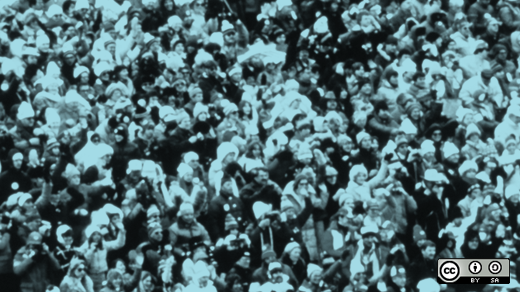This is Part 2 in a series of articles on community management best practices. Read Part 1: How community building can help an organization's bottom line, and my collection of 16 resources for measuring open source community ROI.
If you are part of an organization looking to get into the community-support game, you would do well to tread carefully and deliberately. Communities, particularly at the start of your involvement in them, can be delicate and fragile things. Stomping in there with big words and big plans and big brand engagement will cause a lot of damage to the community and its ecosystem, often of the irreparable sort.
Before your organization sets forth on the community path, take the time to do research first. Learn who the members of the community are, and about the social dynamics between them. Learn the community's jargon, but not in a "How do you do, fellow kids" sort of way. Listen to what the community members discuss, what concerns them, what they enjoy, what they'd like to change. A week or two of research can help prevent many otherwise non-obvious missteps once you start engaging with and participating in the community.
Once you finally do take the plunge into community support, being open and sincere about both your intentions and the role you will be playing in the community is vital. As this is a community coalesced around a project or product on which you rely, the community likely will welcome a representative from your organization into the fold. But dissembling and pretending not to be associated with the organization will inevitably be discovered and will cause ill-will on the part of the community members.
First build trust
When supporting a community, initially building trust in the members of that community is important. Without trust, you will never be able to guide, direct, or grow a community. It will not matter that the community formed around one of your organization's projects or products. If community members do not trust you, you will not be allowed to participate in the community and you will lose all of the business benefits of that. Furthermore, the community may turn from your product/project entirely.
The actions that build trust within a community are the same ones that build trust between any people or organizations:
- First listen. Listen, listen, listen. Listen more than you speak. The community has things to say and wants to be heard. Take the time to listen carefully.
- Then speak. When you do speak, do so to make promises based upon what you have heard. Making the promises is not nearly enough; you also must deliver on them. If you're not making promises when you speak, you should be asking for feedback and input and then, again, taking action upon this.
Community communication
Another important reason for you to speak rather than listen is the unfortunate situation of negative interactions and experiences within the community. If not for the sake of the community, then for the sake of your organization's reputation, you must maintain a policy of zero tolerance of abuse.
When speaking with the community, you must always be open, sincere, and honest, brutally so if necessary. Part of this may include owning up to your mistakes, communicating what went wrong (and what's being done to correct it), and making sure it never happens again. This is more than just PR; it's building, reinforcing, and validating the trust and relationship you've established with the community.
This level of listening, delivering, and communication can form a strong foundation of trust that will get your organization and the community through both good times and bad. When both sides trust and support each other, that's when the real magic begins to happen. Furthermore, that's when other people, viewing the community from the outside, start seeing that magic and want to be a part of it. A strong, vibrant, and trusting community practically builds itself. All it needs it an understanding hand to help guide it and to keep the negative influences and personalities—which find their way into every community—from taking root.
That guidance, and building and maintaining trust, can be a full-time job. Organizational interaction with a community requires a lot of hands-on, high-touch, intimate and open work, otherwise community trust is lost, and community members will turn away from the project/product and the organization. This work is the purview of specialists, people who have invested the time and effort to become intellectually and emotionally familiar with and to the community. These are people who become trusted members of the community and work for the organization as advocates for the community to help provide maximum benefits to both sides of the equation. These people are often called community managers, despite the fact that most of the management that they have to do is upward and internal to their organization, rather than within the community.
A good community manager is knowledgeable of and trusted by the community, so little management is required on that front. What is more often the case is that the organization for which they work does not fully understand the complexities and benefits of the work that the community manager is performing and will—intentionally or not— obstruct or attempt to control the community. This puts the community manager in a difficult position, where they are forced to explain diplomatically the counter-productive actions of the organization to a perplexed community, while also trying to explain the benefits (at risk of being lost) of community support to an organization that may not have thought such things through prior to establishing a community support program.
Thanks
Immense thanks to Stephen Walli and Josh Simmons for reviewing early drafts of these articles. Their feedback was invaluable. Any shortcomings in the articles are entirely of my own creation.






Comments are closed.